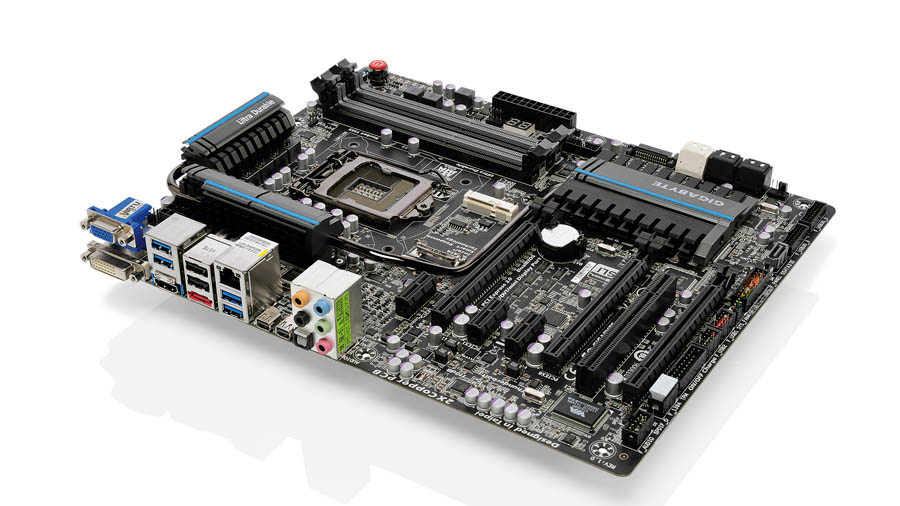TechRadar Verdict
Pros
- +
Two Thunderbolt ports
- +
Good performance
- +
Good OC headroom
- +
Excellent feature set
Cons
- -
Price
Why you can trust TechRadar
What do you get for the motherboard that has everything? Gigabyte's answer is to add a pair of Thunderbolt connectors to the rear of its massively feature-rich mobo for all the super-speed I/O goodness they bring.
The Z77X-UP5TH is the top Z77 board from Gigabyte, and has pretty much everything a full-spec mobo should.
Thunderbolt connections are the bastard children of PCIe and DisplayPort, enabling fast, two-way streams of both traditional data and video to be piped down the same cable. As an added bonus, you can daisy-chain devices to a single connection - like stringing out external hard drives all the way to a DisplayPort monitor.
Gigabyte adding a pair of these new I/O connectors to its board may just seem like willy-waving, but it means the Z77X-UP5TH has an extra two display outputs, as well as all the speedy data-shunting capabilities.
This Z77 board then comes with the ability to run three screens without resorting to discrete graphics, and without sacrificing other I/O capabilities thanks to daisy-chaining.
Thunder road
Still, right now the benefits of Thunderbolt are rather ephemeral. There aren't many DisplayPort panels around at the reasonable prices we've come to expect from the recent IPS boom, and unless you're jamming an SSD into an external Thunderbolt caddy, you'll struggle to get full use from the bandwidth the new connection offers.
It's a worthwhile nod to future-proofing though, and this advanced I/O deserves to do well. I remember wondering whether I really needed to go for USB connections on a mobo upgrade in the years before it became a necessity, and being so glad I did.
But although Thunderbolt is a headline-grabber for this mobo, it's not the only thing in its favour. Gigabyte seemed to lose its way a little in the P67 wilderness, but has come out in force for the 7-series boards, offering serious performance once again.
Gigabyte has played about with the power components around the CPU socket, and by changing the MOSFETs, it has made that part of the board cooler. This means it can cope with more juice, and a little more overclocking fun too.
It loses out slightly in the OC race compared with the similarly priced Asus P8Z77-V Premium, but in a bit of a switch around, where Asus used to be the gaming brand, the Gigabyte board offers faster benchmarks in both Shogun 2 and Batman: Arkham City with the same setup.
Benchmarks
CPU rendering performance
Cinebench R11.5: Index score: Higher is better
GIGABYTE Z77X-UP5TH: 7.90
ASUS P8Z77-V PREMIUM: 7.97
Gaming performance
Batman: AC: Frames per second: Higher is better
GIGABYTE Z77X-UP5TH: 190
ASUS P8Z77-V PREMIUM: 177
Thunderbolt performance
AS SSD: Megabytes per second: Higher is better
GIGABYTE Z77X-UP5TH: 428
ASUS P8Z77-V PREMIUM: 447
GIGABYTE Z77X-UP5TH: 278
ASUS P8Z77-V PREMIUM: 294
Obviously though, we have to consider the price tags of these premium boards. When you can pick up a perfectly functional Z77 for much less, you have to make some pretty compelling arguments to encourage people to spend more.
The performance and incredible feature-set of this board though do a pretty good job. This isn't a board for the gamer on a budget - this is for the person putting their PC together with more professional, productive leanings. And who wants to hit the highest gaming frame rates, too.
